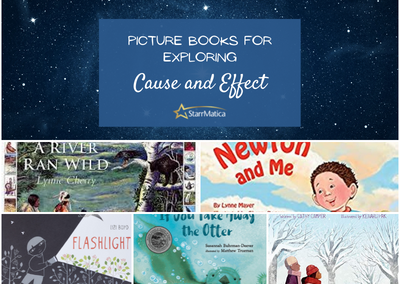Picture books are a great way to get students to examine the crosscutting concepts of the Next Generation Science Standards. New to the crosscutting concepts? Here’s a quick summary! The crosscutting concepts are one of the three dimensions of the NGSS. The seven crosscutting concepts are lenses through which your students can examine different phenomena. Using the CCC helps students to better understand both known and unfamiliar phenomena, so it can be worthwhile to spend some time helping them to dig in and really understand what each concept means. Using picture books can help make the CCC accessible to students of all ages!
The picture books shared below are fantastic for examining the crosscutting concept of Cause and Effect. Elementary teachers are typically familiar with cause and effect as a reading skill. It is similar in the context of science with the addition of determining the mechanism. The mechanism is the science behind the effect. What = Cause; Why = Effect; How = Mechanism For example, a toy car is rolled across the carpet and slows to a stop. The effect is the car slowing down. The cause is the carpet. And the mechanism – the science behind the effect – is friction.
Whether you are reading the following picture books aloud, having students explore them in small groups, or having students read them independently, the following questions can be used to help students focus on cause and effect:
- What is the cause? Why did it happen?
- How did it happen?
- How do the patterns in the data allow you to decide whether ____ caused ____?
- What caused the patterns you observed? How do you know?
- What would you predict would happen if __?
- How is the situation similar to or different from ____?
- How could you make this happen again?
- What is the effect of the change?
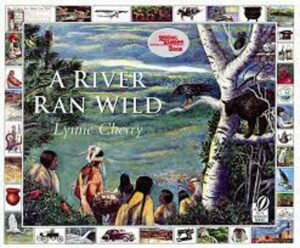 A River Ran Wild by Lynne Cherry is a classic picture book perfect for exploring cause and effect in the context of environmental issues. Along with beautifully detailed illustrations, Lynne Cherry tells the tale of the Nashua River from the 1400’s through the 1980’s as the river is transformed from pristine to polluted and back again.
A River Ran Wild by Lynne Cherry is a classic picture book perfect for exploring cause and effect in the context of environmental issues. Along with beautifully detailed illustrations, Lynne Cherry tells the tale of the Nashua River from the 1400’s through the 1980’s as the river is transformed from pristine to polluted and back again.
Questions to Discuss: Why do you think people polluted the river in the first place? Why do you think they were convinced to clean it up?
Activity Idea: Students can learn about Living Lands and Waters, an organization dedicated to cleaning up America’s Rivers. Then have students brainstorm how they could help clean up a waterway in your area.
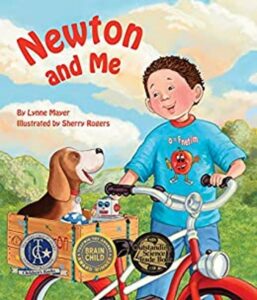 Texts about physical science concepts can be your “go-to” books for exploring the concept of cause and effect. In Newton and Me by Lynne Mayer, a boy and his dog explore forces by pushing and pulling objects and noticing how friction and gravity play a role in the movement of objects.
Texts about physical science concepts can be your “go-to” books for exploring the concept of cause and effect. In Newton and Me by Lynne Mayer, a boy and his dog explore forces by pushing and pulling objects and noticing how friction and gravity play a role in the movement of objects.
Questions to Discuss: How did the pushes and pulls described in the text affect objects? Why were some objects affected by pushes and pulls differently than others? Why was the same object sometimes affected differently by a push or a pull?
Activity Idea: Pair with this online game where students explore how pushes of different strengths affect how far an object travels. Students can change the strength of a push to direct an object to a given target and can even create their own challenge for a friend!
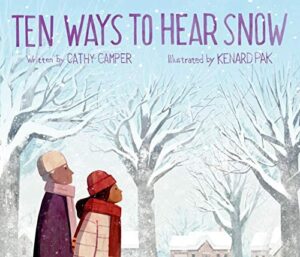 Ten Ways to Hear Snow by Cathy Camper is a touching story of Lina who travels through freshly falling snow to make grape leaves with her grandmother. On her way, she discovers different ways to hear the snow by focusing on what she is hearing rather than seeing. She wonders if her grandmother relies on her hearing more often since her eyesight is failing.
Ten Ways to Hear Snow by Cathy Camper is a touching story of Lina who travels through freshly falling snow to make grape leaves with her grandmother. On her way, she discovers different ways to hear the snow by focusing on what she is hearing rather than seeing. She wonders if her grandmother relies on her hearing more often since her eyesight is failing.
Questions to Discuss: Does snow actually make a noise you can hear? How? What is necessary for snow to make a noise? Or asked another way: What is the cause of each “way” Lina hears snow (effect)? What is the mechanism at work?
Activity Idea: Take students on a nature walk and have them choose to describe something they can hear in different ways How many ways can they hear a bird? a tree? the grass? the wind? What is causing each noise they can hear?
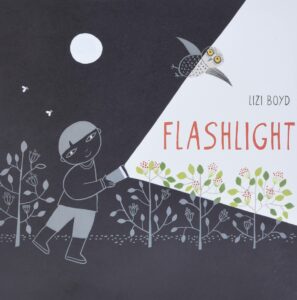 Flashlight by Lizi Boyd is a wordless book about a boy who goes exploring with his flashlight at night. The illustrator’s use of light and dark is simply stunning. This text is perfect for focusing in on how light affects our sight.
Flashlight by Lizi Boyd is a wordless book about a boy who goes exploring with his flashlight at night. The illustrator’s use of light and dark is simply stunning. This text is perfect for focusing in on how light affects our sight.
Questions to Discuss: What is the cause of the boy being able to see objects in the book? Why does the flashlight allow him to see objects?
Activity Idea: Make an authentic connection to art by exploring the concept of positive and negative space. Check out this art tutorial video for a fun idea to try with your students.
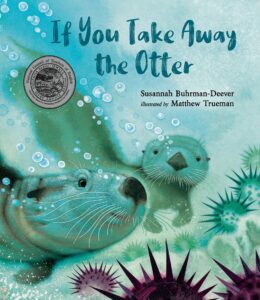 If You Take Away the Otter by Susannah Buhrman-Deever is an excellent text for exploring the cascading effects that occur when one organism in an ecosystem is disrupted. Beginning with an explanation of the interconnectedness of the organisms in a Pacific Coast kelp forest, this text explains what happened to the ecosystem when otters were hunted almost to extinction.
If You Take Away the Otter by Susannah Buhrman-Deever is an excellent text for exploring the cascading effects that occur when one organism in an ecosystem is disrupted. Beginning with an explanation of the interconnectedness of the organisms in a Pacific Coast kelp forest, this text explains what happened to the ecosystem when otters were hunted almost to extinction.
Questions to Discuss: Can one cause have multiple effects? What information in the text supports your answer? Did the solution described in the book work? What evidence in the text supports your claim? How could this solution be applied to another ecosystem in danger?
Activity Idea: If your students are interested in otters, check out the live cam of otters from the Monterey Bay Aquarium.
If you are a StarrMatica Texts: Science Your Way subscriber, you can check out the texts below that align with an exploration of cause and effect. Remember, each 1st – 5th grade text has multiple reading levels so all of your students can read the same content independently.
- Kindergarten: Healthy Plants; Plant Power; Push Hard! Pull Soft!; Push This Way! Pull That Way!; Push and Pull; Keeping Cool in the Sun; Stay in the Shade; Warm It Up
- First grade: What is a Sound Wave; Listen Up; Let There Be Light; Light It Up!; Shadows Everywhere; Shadow Puppets; Transparent, Opaque, and Translucent; Communicating with Sound
- Second grade: Building Better Beaches; Preventing Erosion; What Do Plants Need to Grow?; Change in Matter; What’s the Matter
- Third grade: Grouping Up; Safety in Numbers; fabulous Fossils; How Are Fossils Formed?;Protecting the Giant Pandas; Saving the Giant Pandas; Amazing Amazon Animals; Surviving and Thriving in the Amazon Rainforest; Island Lizards and a Leaf Blower; Lizard Adaptations; Nature’s Snow Sculptures; The Making of a Snow Donut; The Invisible World of Forces; May the Force Be With You; Solving the Mystery of Sailing Stones; The Sailing Stones of Death Valley; Amazing Magnets; Magnets are Everywhere; Do Opposites Really Attract?
- Fourth grade: Rainbow Rocks; Curious Clouds and CFCs; A Race Toward Ozone Recovery; Fossil Fuels and Clean Energy; Plants Power Our Future; Powerful Plants; Plant Power; Creating Transverse Waves; Seeing the World
- Fifth grade: Does Farming Help or Harm the Earth?; Why Are Forests Disappearing?; The Creative Cycle of Food; The Weight of a Closed System; How Plants Grow; Of Candles and Ice Cubes; The Mysteries of Fire and Ice; Changes in Matter; Chemical Reactions Around You; Is It A New Substance; Gravity’s Forceful Nature
Not a subscriber? Click here for a free trial to access the texts above.
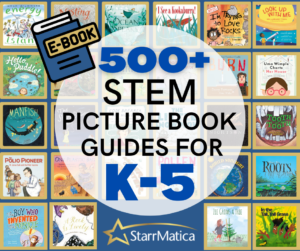 And if you are looking for additional picture books for your science classroom, check out the Perfect Picture Book Pairing Series that includes one-page guides with activities and discussion questions for hundreds of STEM-themed picture books aligned to every NGSS performance expectation!
And if you are looking for additional picture books for your science classroom, check out the Perfect Picture Book Pairing Series that includes one-page guides with activities and discussion questions for hundreds of STEM-themed picture books aligned to every NGSS performance expectation!
CLICK HERE TO PREVIEW THE PERFECT PICTURE BOOK PAIRING EBOOKS
Be sure to check out the other posts in this series to discover picture books to highlight each of the seven crosscutting concepts in the NGSS!
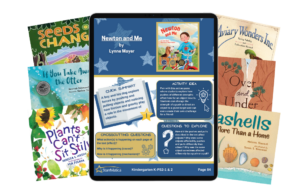
Want to save even more time with lesson ideas for 35 picture books that you can use to highlight all seven crosscutting concepts?
Enter your information below to receive your complimentary picture book guides including activity ideas, science questions, and crosscutting concept questions!

